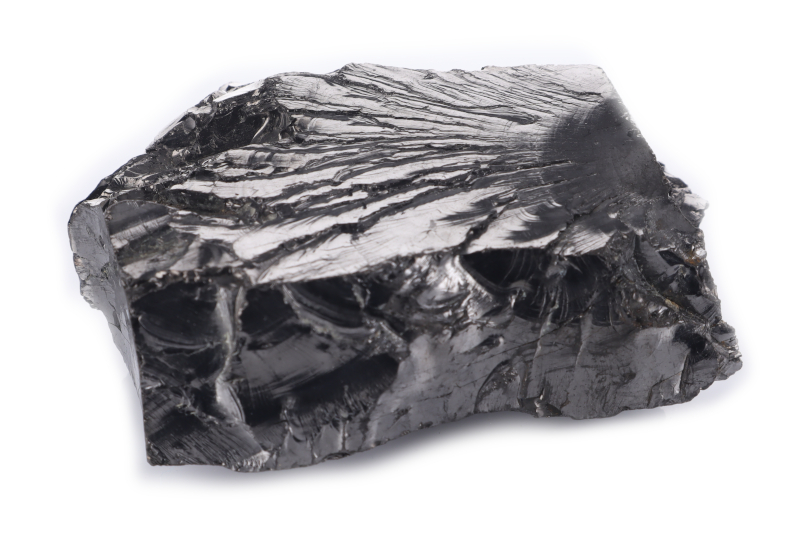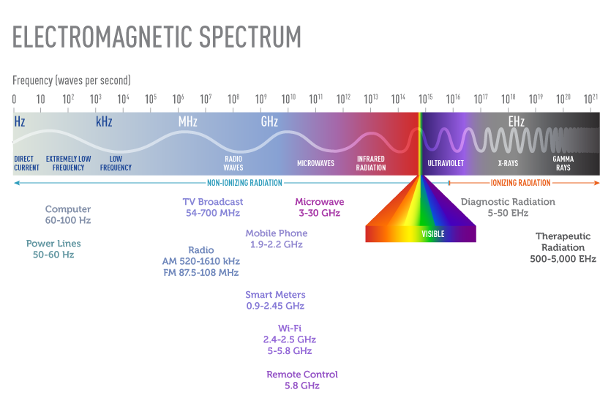Scientific Papers
Effect of magnetic impurities in based on Shungite electromagnetic absorbers on its shielding properties
Pukhir H.A. , Mahmoud M.Sh.
Abstract
The effect of ferromagnetic impurities in electromagnetic based shungite absorbers is studied. The presence of the particle’s magnetic powder in composite structure influences attenuation and reflection characteristics of shielding material has been established. It is found that the exact quantity of magnetic inclusions in relation to the shungite powder is principal for the reflection coefficient and has an effect on electromagnetic radiation attenuation. The compound with powders of shungite and nickel-zinc ferrite in different percentages has been investigated. The dependence of the shielding characteristics of the composite is shown. The use of these composite materials for the creation of electromagnetic shielding constructions is considered.
Introduction
Using electromagnetic resources is an inalienable part of modern society. Today we cannot imagine our life without most electronic devices. Some of them help us to keep our living. But we obtain some ecological problems apart from the useful effect of electromagnetic energy. High levels of electromagnetic radiation are not a habitat. That is why we must constrain electromagnetic radiation emissions. The application of electromagnetic shields is the main technique to decrease the negative effect of electromagnetic radiation on biological forms. The main purpose of scientists in this scientific area is to create shielding materials and constructions that have high efficiency in a wide range of frequencies, are low cost and are suitable for any application. Nowadays powdery carbonaceous materials are widely used in designs to create screens of electromagnetic radiation with reduced weight and size characteristics and corrosion-resistant. In [1], [2] it is shown the efficiency of use for these purposes shungite minerals. In this case, the actual task is reducing the proportion of energy reflected from the surface shields electromagnetic radiation. The aim of this paper investigation is the determination of electromagnetic radiation attenuation features by shungite powder with ferromagnetic impurities and the establishment of shielding properties depending on the compound of the composite.
Experiment
To increase the efficiency of the screen, which is a composite material based on shungite we may add magnetic inclusions for the introduction of additional magnetic losses. This will also reduce the proportion of energy reflected from the shielding screen. Additional attenuation of electromagnetic radiation makes a presence in the absorber slurry components [3] [4]. We used shungite, consisting of 68% of the silicates in the form of silicon oxide and 29% of globular graphite-like carbon, powdered magnetic materials – ferrites, water, knitted fabric, and the binder. Powdered shungite with a particle diameter of 10 microns was mixed with powdered NiZn-ferrite consisting of similar-sized particles as a percentage shungite / magnetic powder, 90:10, 80:20, 70:30, 60:40, 50:50, respectively. To obtain a homogeneous structure in the resulting powder mixture was added a small amount of water to obtain a homogeneous viscous mass. The sealing of the samples was carried out using polyethylene. To fix the powder on a knitted structure matrix was used binder, for example, acrylic dye. For the experiment samples with size 5 cm × 5 cm. The sample thickness was about 3 cm. 978-1-4244-6051-9/11/$26.00 ©2011 IEEE Measurement of the shielding characteristics of the samples, sealed with polyethylene, is performed immediately after sample preparation. The samples, sealed in a textile binder matrix, incubated for two days prior to curing. To measure the performance of screening used a panoramic measuring attenuation and voltage standing wave ratio (VSWR). For the samples studied experimentally obtained values of the transfer, which in magnitude is equal to the weakening of EMR, and voltage standing wave ratio, translated into the reflection coefficient in the frequency range 8 … 11.5 GHz. The relative error is less than 5%. Before measurement of attenuation, samples water saturation was estimated by weighing.
Results and discussion
Studies that have measured the shielding characteristics suggest that the presence in the shungite shielding material magnetic inclusions affect the reflectivity of the screen. A significant reduction in reflectivity (Fig. 1b) for the sample sealed with polyethylene in the composition of which 70% shungite and 30% NiZn-ferrite. The viewed sample shows the lowest reflectance in the presence of a metal reflector behind the sample in the area from 8 to 9.5 GHz (Fig. 1c). For samples, number 1 and number 4 is characterized by the resonance phenomenon to reduce the reflection coefficient on the section from 9,5 to 10,5 GHz. The studied materials provide attenuation to 25 dB (Fig. 1a) in the measured range and show the relative stability of performance across the measured frequency range.

Figure 1 – Frequency response attenuation (a), reflectance (b) and reflection coefficient in the presence of a metal reflector behind the sample (a) in the range 8 … 11.5 GHz samples, sealed polyethylene with the following percentages schungite and magnetic powders: № 1 – 50:50, № 2 – 60:40, № 3 – 90:10, № 4 – 80:20, № 5 – 70:30.

Figure 2 – Frequency response attenuation (a), reflectance (b), and reflection coefficient in the presence of a metal reflector behind the sample (a) in the range 8 … 11.5 GHz on samples of a knitted matrix with a binder, and the following percentages shungite and magnetic powder: № 11 / 1 – 70:30, № 12 / 1 – 50:50, № 13 / 1 – 90:10.
After analyzing the frequency dependence of the transmission and reflection of the samples, sealed in a textile binder matrix can also be argued to reduce the reflectance in the range 8 … 10 GHz for the sample with percentages shungite / magnetic powder is 70:30 (Fig. 2b). The test samples provide attenuation of about 15 dB (Fig. 2a). Reducing attenuation due to the presence of fewer water fractions in the bulk of the composite compared with the samples sealed polyethylene. Given the uncertainty of the measurements obtained shielding characteristics are stable over the entire frequency range.
Conclusion
Reducing the reflection coefficient for samples with a certain ratio of powder components can be explained by the selection of the values of magnetic and dielectric components of the composite, which reduces the value of the wave resistance of the medium screen. Additional attenuation due to the absorption of electromagnetic radiation of composite material is achieved by introducing water-based components. Thus, studying the magnetic and dielectric properties of the components of the absorbers of electromagnetic radiation on the basis of powder shungite can simulate the shielding design with the required values of the parameters of attenuation and reflection. Also, it allows you to select the optimal composition of the filler screen of electromagnetic radiation on the basis of the required operating conditions of the electromagnetic shields.
References
1. T. Borbot’ko, U. Kalinin, N. Kolbun, e. Kryshtopova, L. Lynkov, “Carbon-containing minerals and their applications” Minsk, Best print, 2009 – 156 p.
2. T. Borbot’ko, E. Krishtopova, L. Lynkov, “Effect of binders on the shielding properties of composite materials from powdered shungite” Doklady BSUIR, N6, 2007, pp.3–7.
3. H. Pukhir, “Formation of EMI shielding materials based on composite media with dielectric losses” Proc. of “International scientific-technical conference on 45 years of MRTI-BSUIR” Conference, Minsk, 2009, pp. 195–196.
4. E. Ukraine, N. Kolbun, “Shielding properties of multilayer structures of electromagnetic shields on the basis of materials with small-sized inclusions of metals and liquids” Doklady BSUIR, N 4, 2003, p.35.
View http://www.ursi.org/proceedings/procGA11/ursi/KP2-5.pdf
More links to other research :
Shungite – creates protective shields against electromagnetic radiation in the frequency range 100 kHz – 100 GHz
https://link.springer.com/chapter/10.1007/978-3-030-04158-8_6
Antioxidant and Anti-Inflammatory Effects of Shungite against Ultraviolet B Irradiation-Induced Skin Damage in Hairless Mice
https://www.hindawi.com/journals/omcl/2017/7340143/
The structure and composition of natural carbonaceous fullerene containing mineral Shungite
https://issuu.com/alexanderdecker/docs/the_structure_and_composition_of_ca
Shielding Effect of Mineral Schungite during Electromagnetic Irradiation of Rats
https://www.ncbi.nlm.nih.gov/pubmed/14968159
Treated carbon pulls radioactive elements from water: Researchers at Rice, Kazan universities develop unique sorbents, target Fukushima accident site
http://news.rice.edu/2017/01/19/treated-carbon-pulls-radioactive-elements-from-water/
Oxidatively modified carbon as an efficient material for removing radionuclides from water
https://www.sciencedirect.com/science/article/abs/pii/S0008622317300350?via%3Dihub
Review on the Antimicrobial Properties of Carbon Nanostructures
https://www.ncbi.nlm.nih.gov/pmc/articles/PMC5615720/






